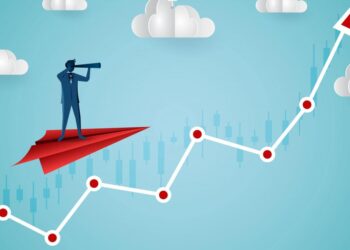For decades, a false dichotomy has dominated the corporate world: the choice between profitability and sustainability. Business leaders were taught that environmental responsibility was a cost center, a philanthropic add-on, or a compliance burden to be minimized. To “go green” was to sacrifice the bottom line. That era is definitively over. Today, this outdated mindset is not just wrong; it is financially hazardous. In the 21st-century economy, sustainability is no longer a fringe concern—it is the very foundation of smart, resilient, and profitable business strategy.
The narrative has flipped. We are now living in an age of stakeholder capitalism, where consumers, investors, employees, and regulators are all scrutinizing a company’s environmental, social, and governance (ESG) performance. A business that pollutes its environment, exploits its workforce, or operates with opaque governance is no longer just “unethical”—it is a high-risk, uninvestable, and undesirable brand. Conversely, the businesses that embed sustainability into their core operations are discovering a powerful engine for innovation, efficiency, and profound competitive advantage.
They are unlocking what we call the “Green Profit”: a superior form of earnings driven by reduced costs, enhanced revenue, mitigated risks, and an iron-clad brand. This is not about planting trees for a press release. This is about re-engineering your business from the ground up to thrive in a resource-constrained, hyper-transparent world. This comprehensive guide will deconstruct the financial case for sustainability and provide a practical framework for transforming your operations into a source of enduring profit.
Beyond the Buzzword: The ESG Framework for Profit
The first step to unlocking the green profit is to stop thinking about sustainability as a vague “green” initiative and start using the rigorous framework investors and market leaders use: ESG (Environmental, Social, and Governance). This model provides a clear roadmap for identifying both risks and opportunities.
- A. Environmental: This is the most familiar pillar, but its financial implications run deep. It covers a company’s direct and indirect impact on the natural world. This includes not only its carbon footprint (Scope 1, 2, and 3 emissions) but also its water consumption, waste generation, raw material sourcing, and impact on biodiversity. The profit angle here is twofold: efficiency and innovation. Reducing energy use, for example, directly cuts utility bills. Re-engineering packaging to use less plastic not only appeases regulators but also slashes material costs.
- B. Social: This pillar concerns a company’s relationships with its people and society. It encompasses everything from diversity, equity, and inclusion (DE&I) and employee health and safety to fair labor practices and data privacy. A strong “Social” score is a direct driver of talent retention. In a tight labor market, the cost of high turnover (recruitment, training, lost productivity) is a massive drain on profit. Companies with strong DE&I and positive cultures are proven to be more innovative, productive, and attractive to the best and brightest minds. Furthermore, it protects against the brand-destroying risk of a supply chain or labor scandal.
- C. Governance: This is the internal architecture of rules, practices, and processes that guide a company. It includes board composition and diversity, executive compensation (especially linking pay to ESG targets), shareholder rights, political contributions, and transparency in auditing and reporting. Strong governance is the bedrock of investor trust. It signals that a company is well-managed, ethical, and focused on long-term value creation, not short-term gains. This directly lowers the cost of capital, as investors see the company as a safer, more predictable bet.
By viewing sustainability through the ESG lens, it transforms from a “cost” to a core component of financial analysis, risk management, and strategic planning.
The ROI of Green: Direct Pathways to Financial Gain
When sustainability is integrated correctly, it doesn’t just “feel good”—it pays dividends. The financial benefits are not abstract; they are tangible, measurable, and often immediate.
A. Massive Operational Cost Reduction
This is the most direct and compelling financial win. Sustainable operations are, by their very nature, efficient operations.
- Energy Efficiency: This is the low-hanging fruit. Upgrading to LED lighting, installing smart HVAC systems, optimizing data center cooling, or using more efficient manufacturing equipment can slash energy bills by 20-40%. These projects often have a payback period of less than two years, delivering pure profit for years to come.
- Waste and Water Reduction: For any company that produces a physical product, waste is a raw material you paid for but didn’t sell. By implementing circular economy principles (which we will explore later), businesses can dramatically reduce or eliminate waste. This means spending less on raw materials and spending less on landfill or disposal fees. Similarly, manufacturing and agriculture companies that invest in closed-loop water systems or drip irrigation can save millions on water procurement and treatment.
- Packaging Optimization: Reducing the size, weight, and material complexity of packaging achieves multiple cost savings. It cuts material costs, reduces shipping costs (less weight and volume), and minimizes regulatory fees associated with plastic or packaging taxes in many jurisdictions.
B. New Revenue Streams and Premium Market Access
Sustainability is a powerful tool for top-line growth. It opens doors to new customers and allows for premium positioning.
- Attracting the “Green Consumer”: A significant and growing demographic of consumers, led by Millennials and Gen Z, actively seeks out and is willing to pay a premium for sustainable products and services. A brand with authentic, verifiable green credentials (like B Corp certification or Fair Trade) can command higher prices and build intense customer loyalty.
- Winning B2B Contracts: This is a critical, often-overlooked driver. Major corporations like Apple, Walmart, and IKEA are now enforcing strict sustainability standards on their entire supply chain. If your B2B company cannot provide data on your carbon footprint, labor practices, and material sourcing, you will be disqualified from these massive contracts. Sustainability is becoming a non-negotiable ticket to play in the big leagues.
- Innovation and New Product Categories: The constraints of sustainability force innovation. R&D teams tasked with finding bio-based materials, creating products that are serviceable (not disposable), or developing new “product-as-a-service” models are creating entirely new market categories. Think of the rise of plant-based foods, electric vehicles, or sustainable fashion. These are not niches; they are high-growth-rate industries.
C. The War for Talent: Your New Superpower
The “Social” pillar of ESG has a direct impact on your P&L.
- Attraction: The modern, high-value employee wants more than a paycheck. They want purpose. Companies with a clear, authentic mission and strong ESG performance consistently win the “war for talent.” This gives them their pick of the best candidates.
- Retention: Employee turnover is a silent profit killer, costing an estimated 33% of an employee’s annual salary to replace them. A strong, inclusive, and purpose-driven culture creates a “sticky” environment where employees are engaged, productive, and less likely to leave. This directly reduces recruitment, onboarding, and training expenses, letting that money fall straight to the bottom line.
Risk Mitigation: The Hidden Profit Protector
A significant portion of profit isn’t just about what you make; it’s about what you don’t lose. A robust ESG strategy is the single best insurance policy against the most significant threats to modern business.
A. De-Risking Your Supply Chain
The fragility of global supply chains has been exposed time and time again. Climate change is a primary driver of this volatility.
- Climate Resilience: A single flood, drought, or wildfire can wipe out a key supplier or disrupt a critical shipping lane for months. Companies that have mapped their supply chain for climate risk—and have diversified their sourcing or invested in resilient infrastructure—can maintain operations while their competitors are shut down.
- Transparency and Traceability: A sustainable supply chain is a transparent one. Knowing exactly where your materials come from protects you from sudden shocks, such as a supplier being shut down for human rights violations or environmental non-compliance. This traceability prevents the reputational and financial nightmare of finding slavery or deforestation in your value chain.
B. Future-Proofing Against Regulatory Risk
The global regulatory tide is moving in only one direction: toward stricter environmental and social rules.
- Carbon Taxes and Emissions Trading: Dozens of countries have implemented or are planning to implement a price on carbon. A company that has already invested in decarbonization will see this as a minimal cost, while its inefficient competitors will face a crippling new tax, destroying their margins.
- Plastic and Waste Bans: Single-use plastic bans, “extended producer responsibility” (EPR) laws, and “right to repair” legislation are becoming common. Companies that proactively designed these issues out of their products will have zero compliance costs. Reactive companies will be forced into expensive, last-minute product and packaging redesigns. By acting now, you treat regulation as a predictable business expense, not an emergency.
C. Protecting Your Brand and Reputation
In our hyper-connected world, brand reputation is your most valuable and fragile asset.
- Avoiding “Greenwashing”: Consumers and investors are now highly adept at spotting “greenwashing”—making false or misleading environmental claims. The backlash from being exposed is severe, leading to customer boycotts, regulatory fines, and a permanent loss of trust. An authentic, data-driven, and transparently-reported ESG strategy is the only antidote.
- Social License to Operate: A single viral video of pollution, a negative story on labor practices, or a scandal in governance can destroy decades of brand equity in days. This risk is unquantifiably massive. A strong, authentic ESG program is not a marketing campaign; it is a core business function that protects your brand’s very “license to operate” in the public eye.
The Circular Economy: A Revolutionary Model for Profit

For the truly visionary, sustainability opens up an entirely new business model: the Circular Economy. The traditional industrial model is linear: “Take-Make-Dispose.” We extract raw materials, manufacture a product, sell it, and the customer throws it away. This is incredibly wasteful and financially inefficient.
The Circular Economy, by contrast, is a model designed to eliminate waste and keep materials in use. This isn’t just recycling; it’s a complete rethinking of product and ownership.
- A. Designing for Disassembly and Repair: Products are intentionally designed to be easily repaired, refurbished, and ultimately disassembled. This “right to repair” model allows the company (or certified partners) to create new revenue streams from servicing and upgrade-related services, deepening the customer relationship.
- B. Product as a Service (PaaS): Why sell a product when you can sell the service it provides? This is a core circular concept.
- Interface, the carpet manufacturer, pioneered this by leasing “floor covering services.” They own the carpet tiles. When a tile gets worn out, they replace only that tile, take the old one back, and recycle 100% of the materials into a new tile. Their costs plummet, the customer is locked in, and no carpet ever goes to a landfill.
- Philips leases “light as a service” to large buildings. Customers pay for illumination, while Philips owns the fixtures and is responsible for maintenance and energy costs. This incentivizes Philips to make the most durable, energy-efficient bulbs possible, aligning their profit with their client’s and the planet’s interests.
- C. Creating New Revenue from “Waste”: In a circular model, “waste” is just a resource in the wrong place.
- Patagonia’s “Worn Wear” program buys back its own used garments from customers, repairs them, and resells them. This creates a new, high-margin revenue stream, engages a new set of customers, and reinforces the brand’s core message of durability.
- Food and beverage companies are turning citrus peels into natural flavorings, coffee grounds into biofuels, and wastewater into biogas to power their factories.
The circular economy is the ultimate expression of the green profit, creating a closed-loop system where economic growth is permanently decoupled from resource consumption.
Your First Steps: A Practical Guide to Implementation
This transformation can feel overwhelming. The key is to start strategically.
- A. Conduct a Materiality Assessment: You cannot and should not try to fix everything at once. A materiality assessment is a formal process of identifying which ESG issues are most material (i.e., financially relevant) to your specific industry and your specific stakeholders (investors, customers, employees). For a software company, this might be data privacy and data center energy use. For a clothing brand, it will be supply chain labor and water use. Focus your resources where they will have the greatest impact.
- B. Establish a Baseline and Set Ambitious Goals: You cannot manage what you do not measure. Your first step is to benchmark your current performance. What is your carbon footprint? What is your employee turnover rate? What is your packaging-to-product ratio? Once you have this baseline, set public, ambitious, and science-based goals (e.g., “Achieve 100% renewable energy in all operations by 2030” or “Reach 50% women in leadership by 2035”).
- C. Embed, Don’t Bolt-On: Sustainability cannot be the job of a single “Chief Sustainability Officer.” It must be embedded in every corporate function.
- R&D must be designing products for circularity.
- Finance must be calculating the ROI of green projects and securing green bonds.
- Operations must be optimizing for energy and waste.
- Marketing must be communicating your efforts authentically.
- Critically, link executive compensation directly to achieving ESG targets. This is the single fastest way to ensure accountability and drive change.
- D. Report with Radical Transparency: The currency of the new economy is trust. To build it, you must report on your ESG performance with the same rigor you apply to your financial reporting. Use global, third-party standards like the GRI (Global Reporting Initiative) or SASB (Sustainability Accounting Standards Board). Be honest about your successes and your failures. This authenticity is what separates true leaders from the greenwashers.
The Future of Profit is Green

The debate is over. The data is in. Sustainability and profitability are no longer competing interests; they are two sides of the same coin. The businesses that cling to the old “take-make-dispose” model, that treat the planet as a limitless resource and people as disposable inputs, are already being left behind. They are facing higher costs, greater risks, a shrinking talent pool, and an irrelevant brand.
The market leaders of the next century will be those who embrace the “Green Profit.” They will be the companies that are operationally efficient, innovative, resilient, and beloved by their customers and employees. Unlocking sustainable practices is not a burden. It is the most significant, untapped economic opportunity of our generation.






